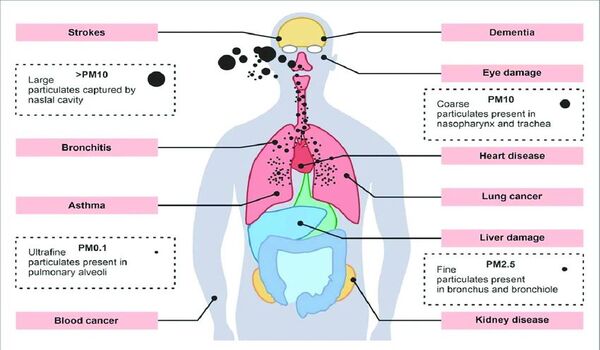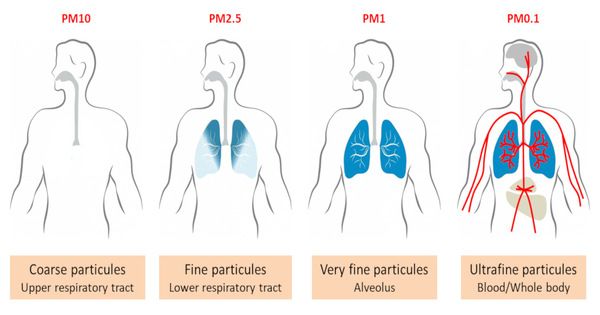Researchers studied global particle pollution and discovered health concerns from trace elements.
As anyone with seasonal allergies knows, invisible airborne particles may seriously disrupt a person’s day. Small quantities of trace substances in the air, such to the tree pollen that may be bothering you this spring, can have serious consequences for human health. However, unlike pollen counts and other allergy indices, which are closely monitored and generally available, little is known about the ambient quantities of cancer-causing trace elements such as lead and arsenic in developing-country cities.
Randall Martin, the Raymond R. Tucker Distinguished Professor in the McKelvey School of Engineering at Washington University in St. Louis, recently led an analysis of worldwide ambient particulate matter (PM) to understand better two of its important components: mineral dust and trace element oxides. Trace elements like lead and arsenic have well-documented links to poor health effects. While dust comes from both natural sources like deserts and human activity like construction and agriculture, trace elements are mostly emitted by humans through fossil fuel burning and industrial processes.
Reliable elemental composition data of ambient PM is crucial to understand the health risks associated with exposure to airborne trace elements. Our work highlights the significant health risks caused by elevated levels of airborne trace elements, particularly arsenic, in South and Southeast Asia.
Xuan Liu
Martin’s team, including Jay Turner, the James McKelvey Professor of Engineering Education at WashU, and Xuan Liu, a graduate student working with Martin and Turner in the Department of Energy, Environmental & Chemical Engineering, examined data collected by the Surface PARTiculate mAtter Network (SPARTAN), the only global monitoring network that measures PM elemental composition. Their work, published in ES&T Air, produced a valuable dataset and methodology to identify regions with elevated trace elements. The findings also highlighted regions of concern in Bangladesh, India and Vietnam, which might benefit from interventions to reduce trace element emission from human activities.
“Reliable elemental composition data of ambient PM is crucial to understand the health risks associated with exposure to airborne trace elements,” said Liu, the first author on the paper. “Our work highlights the significant health risks caused by elevated levels of airborne trace elements, particularly arsenic, in South and Southeast Asia.”
“This work draws attention to the need for sustained consistent monitoring of the elemental composition of fine particulate matter in urban areas worldwide,” Martin added. “Identifying potential emission sources of these elements will inform targeted interventions to mitigate exposure and safeguard public health.”

Though Martin and his collaborators discovered in previous studies that global air pollution from fine particulate matter decreased between 1998 and 2019, and strategies such as replacing traditional fuel sources with sustainable sources of energy could further reduce PM pollution, their SPARTAN analysis highlights ongoing concerns about trace element exposure through PM inhalation. The team found informal lead-acid battery recycling, e-waste recycling, and coal-fired brick kilns as potential sources of high trace element concentrations, notably in Dhaka, Bangladesh.
More broadly, the team noted that concentrations of trace elements are particularly high in low-income and middle-income countries due to unregulated urbanization and industrialization. However, PM monitoring networks in these areas are spotty at best, hindering researchers’ understanding of dust and trace element levels and their emission sources. Uniform sampling methods and reliable analyses are needed to enable comparisons across the world.
“Our growing sample collection will lead to better estimations of dust and trace element concentrations, which will allow us to perform more accurate health risk assessment and thorough investigation into emission sources,” Liu said in a statement. “Certain SPARTAN sites have been selected or established as part of the Multi-Angle Imager for Aerosols (MAIA) satellite mission, which is dedicated to studying the health effects of various forms of airborne particles. This collaboration will result in a huge dataset with greater sample frequency, allowing us to more accurately identify pollution sources in the future.”
















